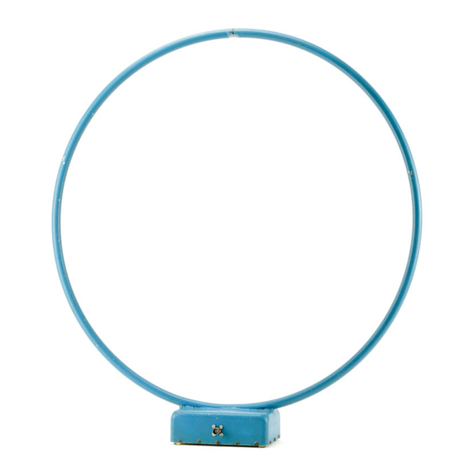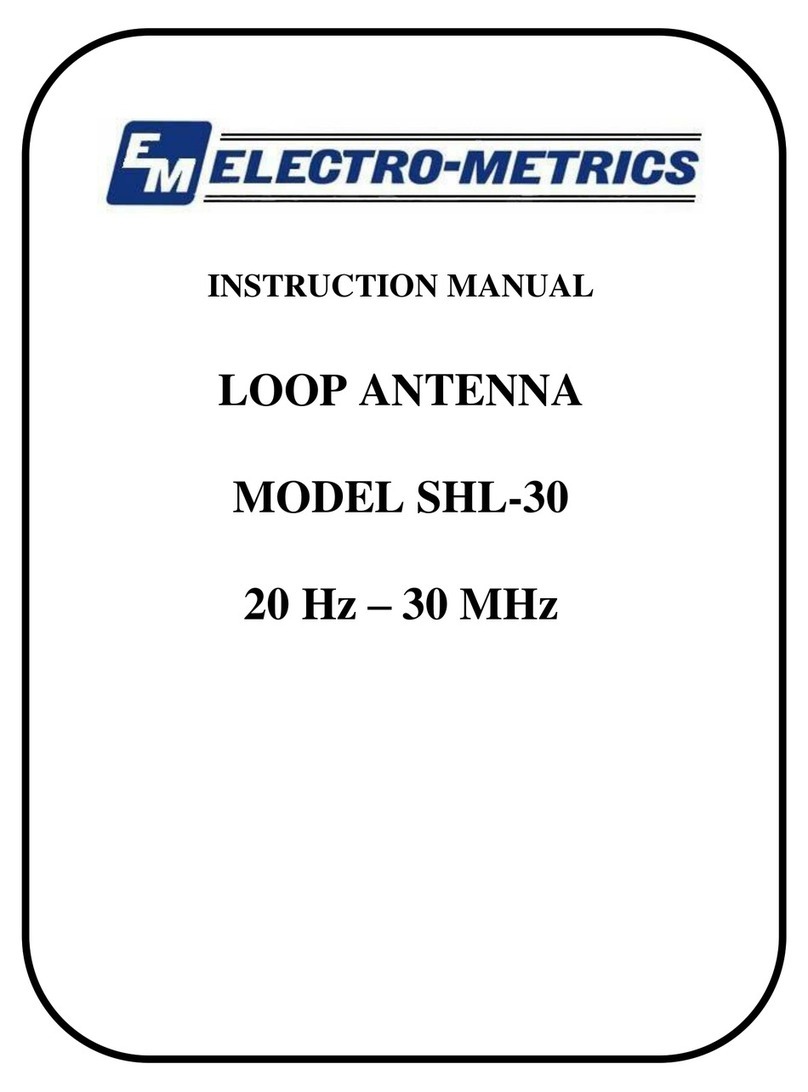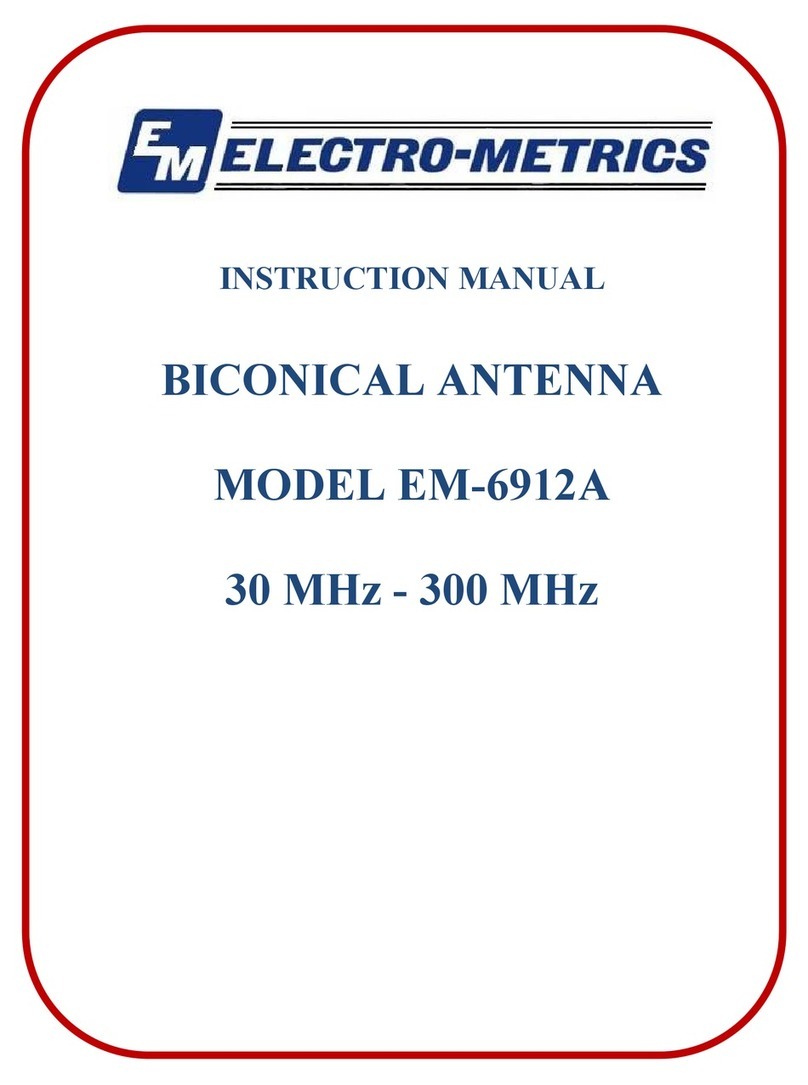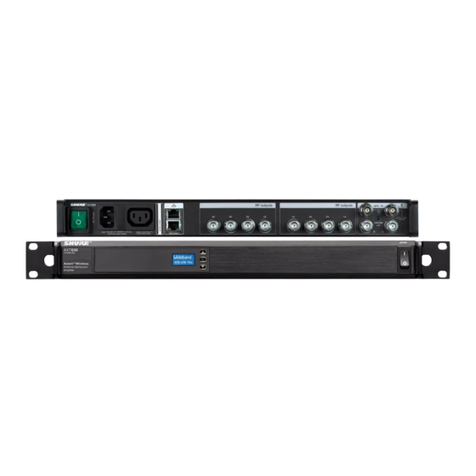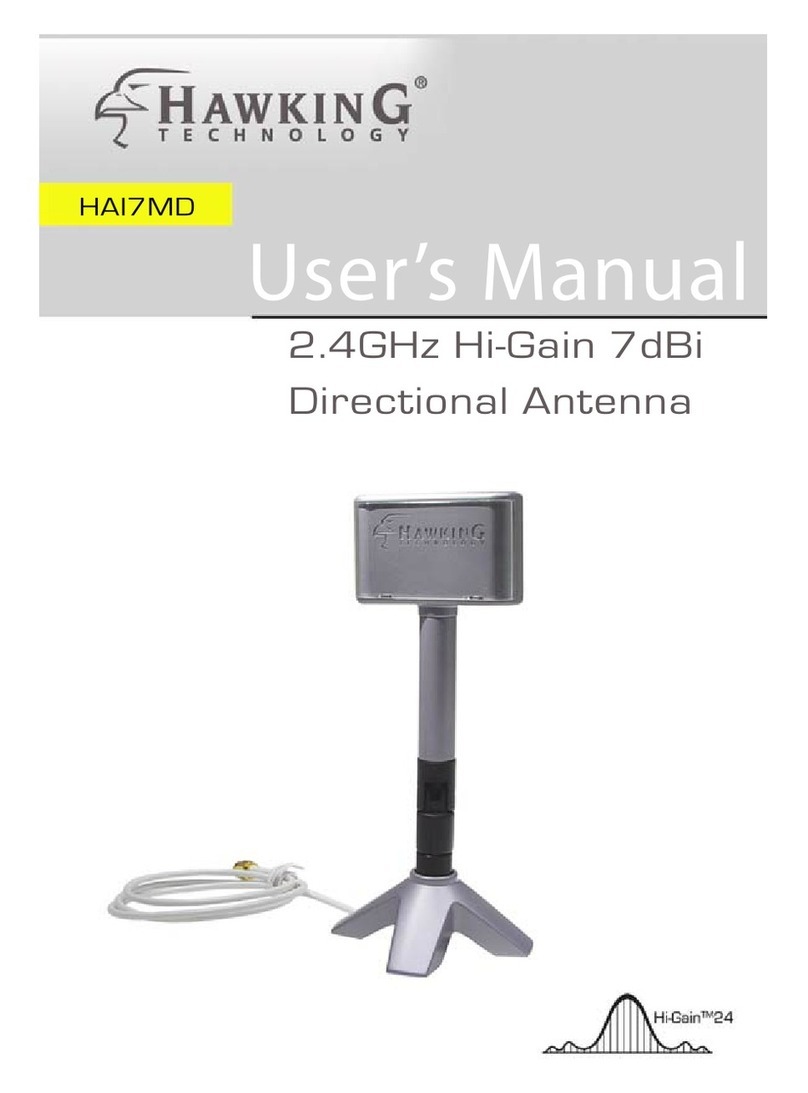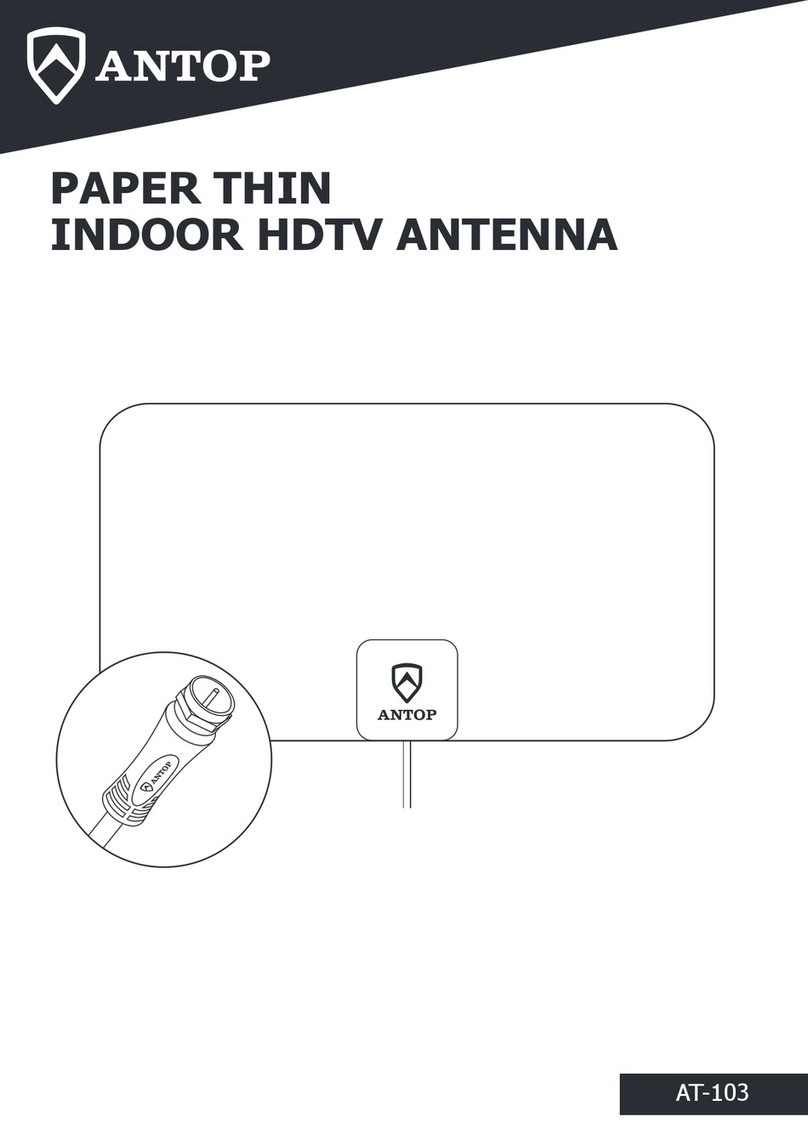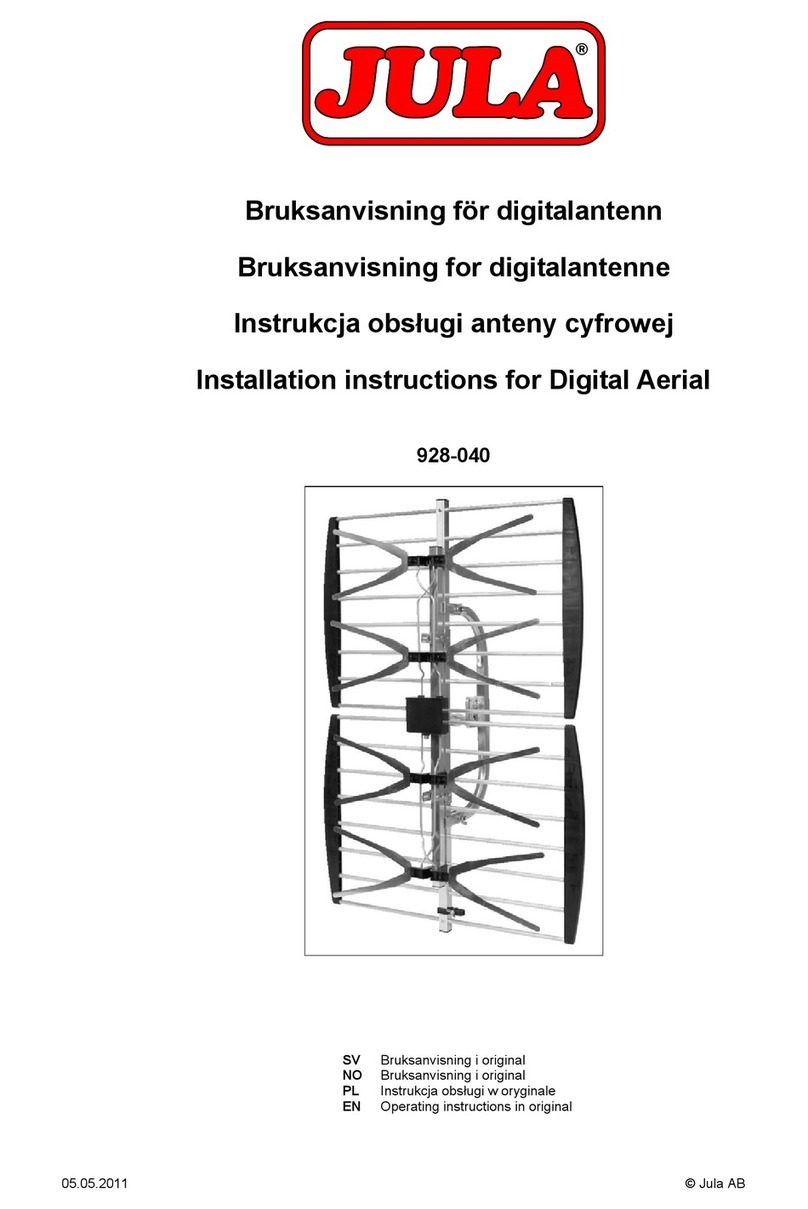Electro-Metrics RVR-30M User manual

INSTRUCTION MANUAL
VERTICAL ANTENNA
MODEL RVR-30M
9 kHz –30 MHz

INSTRUCTION MANUAL
THIS INSTRUCTION MANUAL AND ITS
ASSOCIATED INFORMATION IS
PROPRIETARY. UNAUTHORIZED
REPRODUCTION IS FORBIDDEN.
1995ELECTRO-METRICS CORP.
VERTICAL
ANTENNA
9 kHz –30 MHz
ELECTRO-METRICS
MODEL RVR-30M
SERIAL NO: N/A
ELECTRO-METRICS CORPORATION
231 Enterprise Road, Johnstown, New York 12095
Phone: (518) 762-2600 Fax: (518) 762-2812
MANUAL REV. NO: RVR30M-0495 ISSUE DATE: APRIL 01 1995

WARRANTY
This Model RVR-30M Vertical Antenna is warranted for a period
of 12 months (USA only) from date of shipment against defective
materials and workmanship. This warranty is limited to the repair
of or replacement of defective parts and is void if unauthorized
repair or modification is attempted. Repairs for damage due to
misuse or abnormal operating conditions will be performed at the
factory and will be billed at our commercial hourly rates. Our
estimate will be provided before the work is started.

ELECTRO-METRICS RVR-30M VERTICAL ANTENNA
(RVR30M-1)
DESCRIPTION AND USE ELECTRO-METRICS
MODEL RVR-30M VERTICAL ANTENNA
1.0 Introduction
The Model RVR-30M Vertical Antenna performs electric field measurements from 9 kHz
to 30 MHz. A ten position rotary switch is used to switch in the appropriate matching network
for the frequency selected. Though specifically designed for use with the Electro-Metrics Model
EMC-30 Interference Analyzer, it can be used with any equivalent 50-ohm receiver/analyzer
being designed and calibrated for use in a 50-ohm system.
The Model RVR-30M is designed for use in conjunction with the Model GPA-30
Counterpoise, Model TRI-136 Tripod, and Model CAC-30 Coaxial Cable.
The bottom of the base has a 5/8-20 threaded receptacle for mounting to the Model TRI-
136 Tripod.
2.0 Specifications
2.1 Electrical
Frequency Range (Calibrated): 9 kHz to 30 MHz.
(Antenna Factor Chart furnished with each antenna.)
Input Impedance: Matched to 50.
Connector: Type TNC, female.
NOTE: Though designed as a receiving antenna, the RVR-30M can be
used as a transmitting antenna PROVIDED the power applied
to the antenna DOES NOT exceed 1 W maximum.
2.2 Mechanical
Length Antenna Rod: 1041 mm (41").
Weight: 3.5 kg (7.5 lbs).
3.0 RVR-30M Description
The RVR-30M comprises an approximate 1-meter (41-inch) extensible rod which screws
into a rectangular base containing the matching networks.

ELECTRO-METRICS RVR-30M VERTICAL ANTENNA
(RVR30M-2)
3.1 Frequency Range Switch
Type: Ten position rotary switch.
Location: Right side of the antenna base.
Function: To select one of ten RF Frequency Ranges.
3.2 Signal Out Connector
Type: TNC, female.
Function: Connects the signal received by the antenna to the RF Input Connector of the
50-ohm instrument.
4.0 Theory Of Operation
The Model RVR-30M Vertical Antenna, is basically a 1-meter (41-inch) rod. As is the
case with any rod antenna, optimum transfer of an intercepted signal to the receiver using 50-
ohm cable requires that the rod be fed to an impedance transformation network. Since it is
feasible to optimize this network for no more than approximately octave segments of its
frequency range, it is necessary to switch networks in order to cover the more-than-ten-octave
range of 9 kHz to 30 MHz.
The matching networks are mounted in the base of the antenna and a manual ten-position
switch is used to switch in the appropriate impedance tranformation network.
5.0 Operating Procedures
5.1 Antenna Set-Up Procedures
a. Mount the antenna base to the Model TRP-136 Tripod. The antenna base is
secured to the tripod by screwing it in a clockwise direction, as viewed from
above.
b. Place the Model GPA-30 Counterpoise over and attach it to the top of the antenna
base. Secure the Counterpoise by screwing the four captivated thumb screws on
the counterpoise into the threaded holes provided at the corners of the antenna
base.
NOTE: Some test standards require that the counterpoise be bonded to
the ground plane by a heavy copper strip. Check the test
standard being used for method and technique.
c. Screw the extensible rod into the socket on the top of the antenna housing. Extend
the rod to its full 1-meter (41-inch) length.

ELECTRO-METRICS RVR-30M VERTICAL ANTENNA
(RVR30M-3)
5.2 Electrical Connections
a. Connect the 7.6 m (25-foot) coaxial cable from the "Signal Out" TNC Connector
on the antenna base to the "RF Input" TNC Connector on the EMC-30 front panel
or equivalent 50-ohm instrument/analyzer.
5.3 Operational Use
To use the antenna, simply set the FREQUENCY RANGE Switch to one of ten frequency
ranges arranged as follows:
0.009-0.035 MHz
0.035-0.075 MHz
0.070-0.150 MHz
0.120-0.250 MHz
0.250-0.500 MHz
0.5-1.1 MHz
1.1-2.4 MHz
2.4-5.5 MHz
5.5-12.5 MHz
12.5-30.0 MHz
CAUTION
When used as a transmitting antenna, the power applied to the
RVR-30M must not exceed 1 Watt maximum. If this level is
exceeded, the internal circuitry of the antenna could be
damaged.
6.0 Electric Field Measurements
6.1 Narrowband Radiated Signals
With the Model RVR-30M Remote Vertical Antenna, connected to the 50-ohm receiver,
as described above, tune the receiver to the frequency of interest. Read the two-terminal voltage
indicated by the receiver for the particular signal of interest, following the calibration and
operating procedures in the instruction manual of the receiver.

ELECTRO-METRICS RVR-30M VERTICAL ANTENNA
(RVR30M-4)
To convert the resulting two-terminal reading to the appropriate field strength when using
the RVR-30M, simply add the "antenna factor in dB" at the frequency of interest from the
Antenna Factor Chart for the antenna being used.
Example:
Signal Amplitude Indication........................................+20 dB(µV)
Two-terminal voltage indication is thus.......................+20 dB(µV)
Antenna factor from graph (typical)............................+40 dB(m-1)
Field Strength intercepted by antenna is......................+60 dB(µV/m)
The above procedure is similar for most 50-ohm receivers.
6.2 Broadband Radiated Signals
After determining that the signal is truly a broadband signal (refer to Section II Para. 2.4.7
EMC-30 Manual for a method of determining whether a signal is broadband or narrowband),
proceed to determine the correct two-terminal broadband level using the calibration and
operating procedures of the 50-ohm receiver being used.
To convert the resulting two-terminal reading to the appropriate broadband field strength
when using the RVR-30M, simply add the "antenna factor in dB" at the frequency of interest
from the Antenna Factor Chart for the antenna being used.
Example:
Signal Amplitude Indication.......................................+20 dB(µV)
Broadband Conversion Factor....................................+60 dB(µV/MHz)
Two-terminal broadband signal level..........................+80 dB(µV)
Antenna factor from graph (typical)............................+40 dB(m-1)
Broadband Field Strength...........................................+120 dB(µV/m/MHz)
The above procedure is similar for most 50-ohm receivers.
6.3 Antenna Induced Voltage
Since the effective height of the 1-meter (41-inch) RVR-30M is one-half meter, antenna
induced voltage (open circuit) is:
Ea= E x he,
where:
E = Field strength (µV/m),
he= Effective height of the RVR-30M (equal to 0.5 meter).
Therefore:
Ea= 0.5E.
To find antenna induced voltage in dB(µV), simply subtract 6 dB from any field strength
reading determined using the procedures stated within this manual.

ELECTRO-METRICS RVR-30M VERTICAL ANTENNA
(RVR30M-5)
FIGURE 1
ANTENNA FACTOR CHART
RVR-30M VERTICAL ANTENNA
PAGE 5A
Table of contents
Other Electro-Metrics Antenna manuals
Popular Antenna manuals by other brands
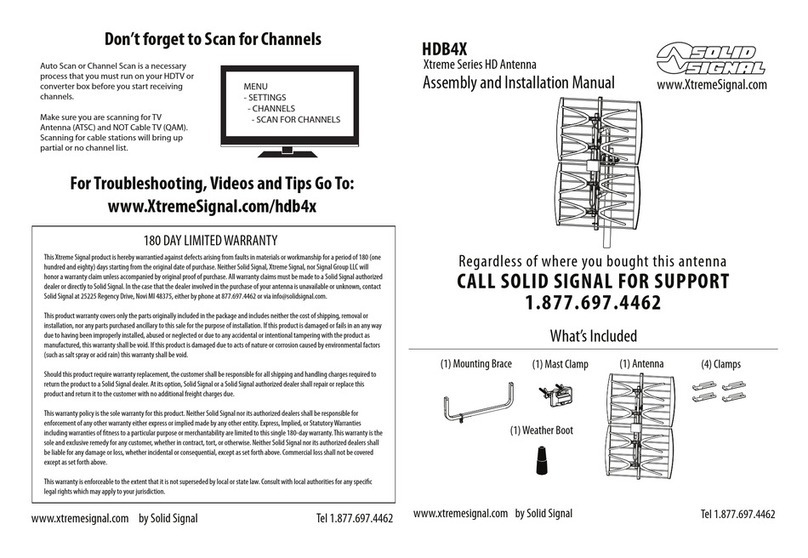
Solid Signal
Solid Signal Xtreme HDB4X Assembly and installation manual

PCTEL
PCTEL VenU PCTHP-CBRS-4-NF installation instructions
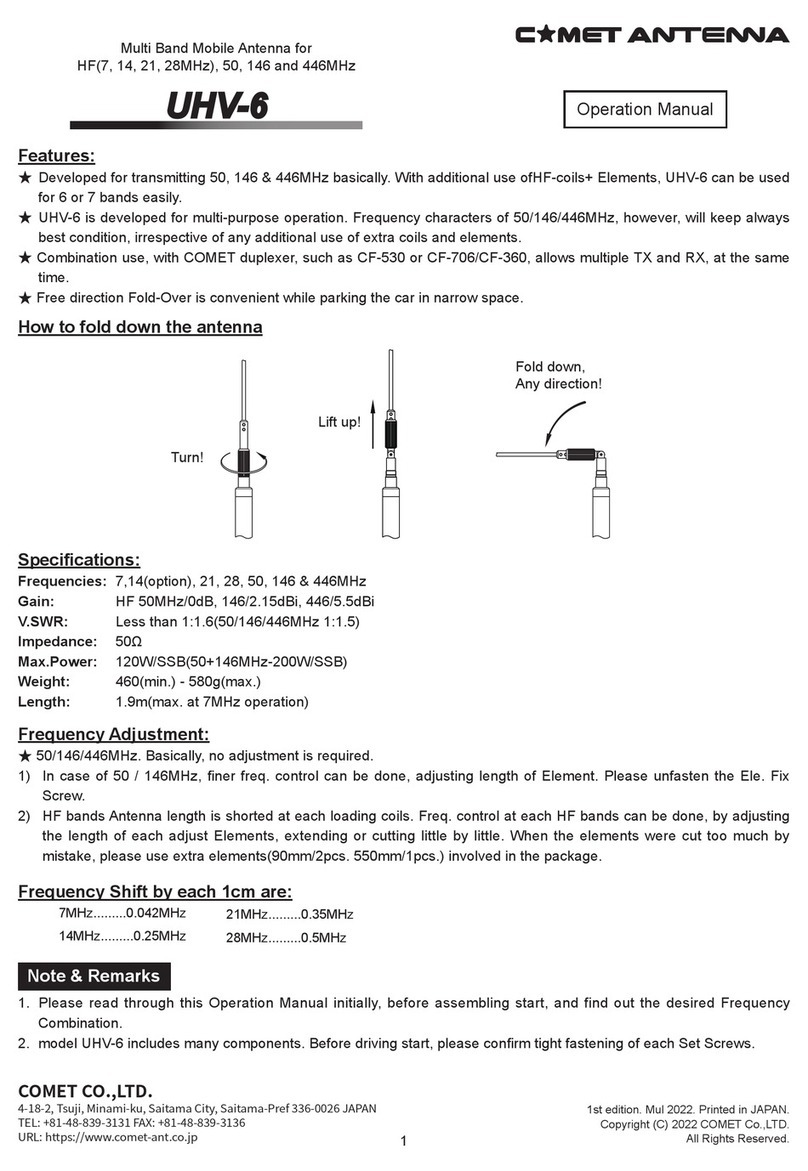
Comet Antenna
Comet Antenna UHV-6 Operation manual

Monoprice
Monoprice HDA-1000 Instruction

COBHAM
COBHAM Explorer 710 user manual

Feig Electronic
Feig Electronic ID ISC.ANT600-DA Application note
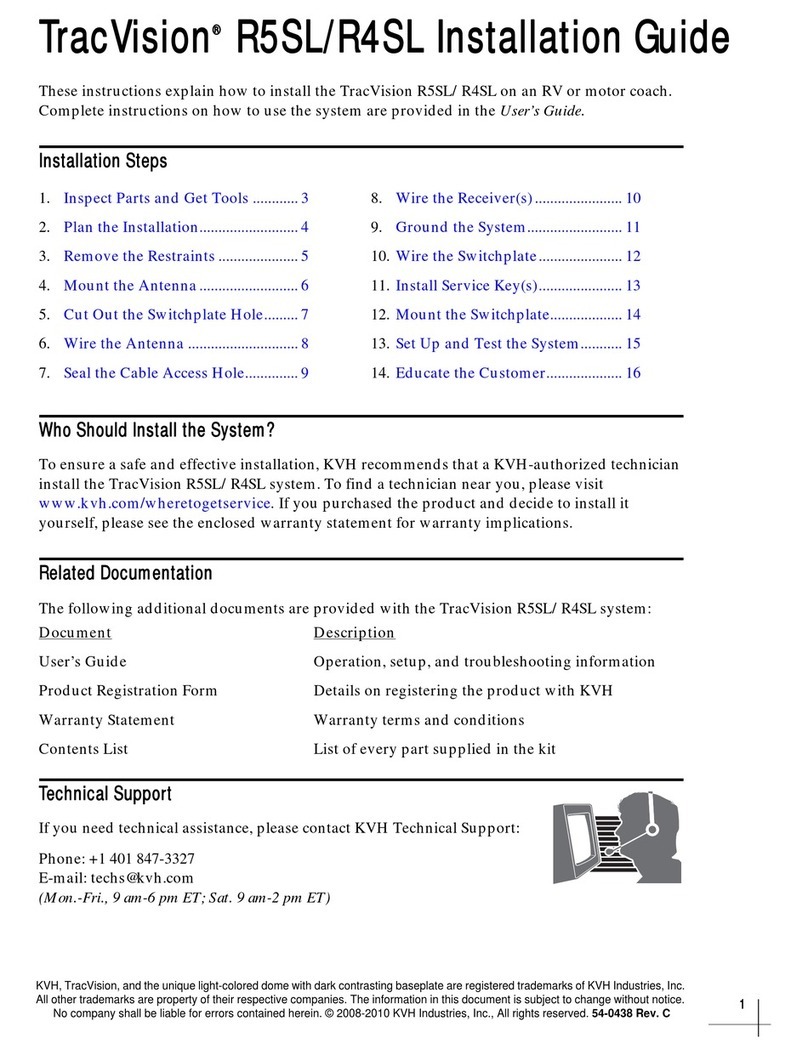
KVH Industries
KVH Industries TracVision R5SL installation guide
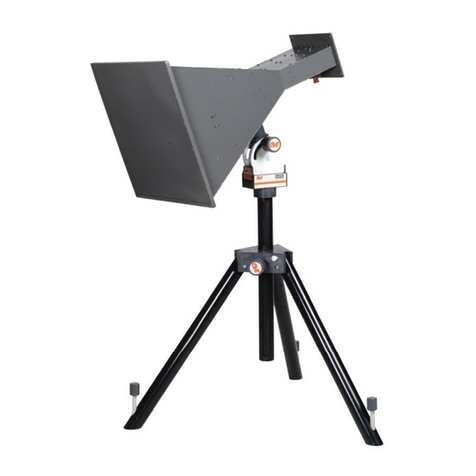
AR
AR ATH800M6G Operating and service manual
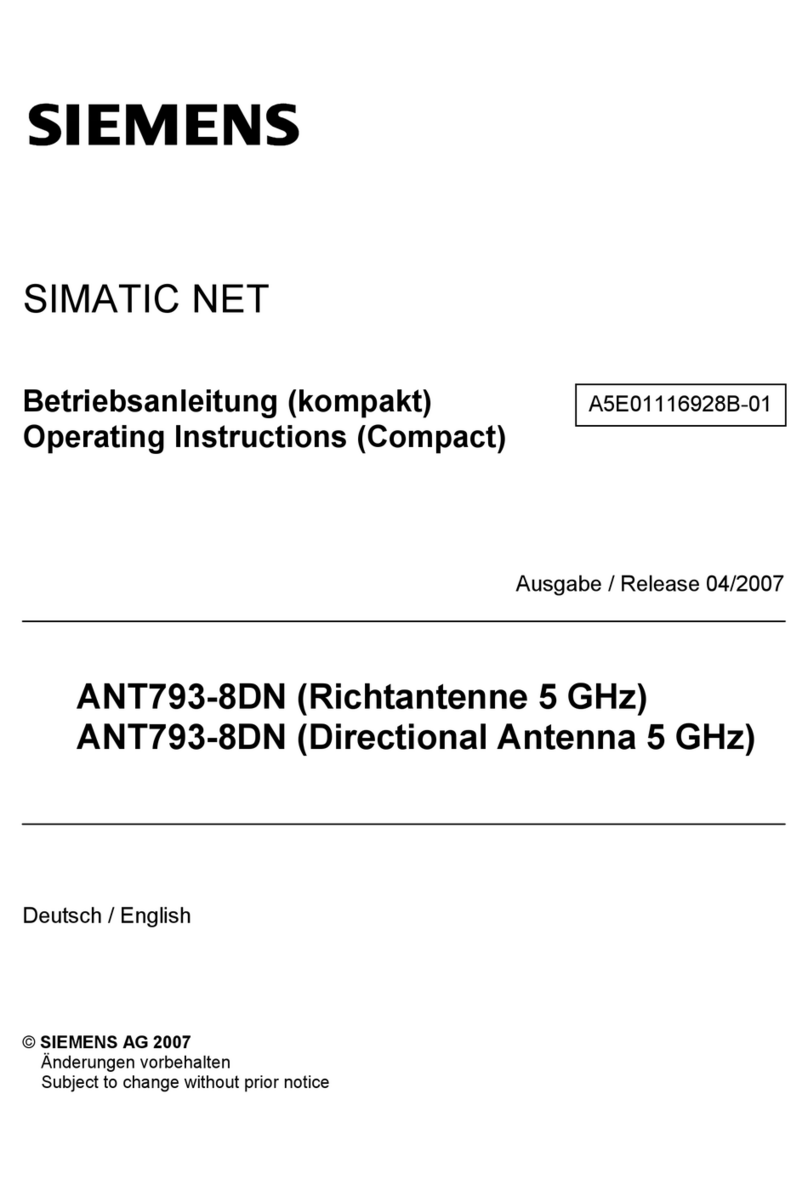
Siemens
Siemens SIMATIC NET ANT793-8DN operating instructions
Pixel
Pixel RF PR0-1 B installation instructions
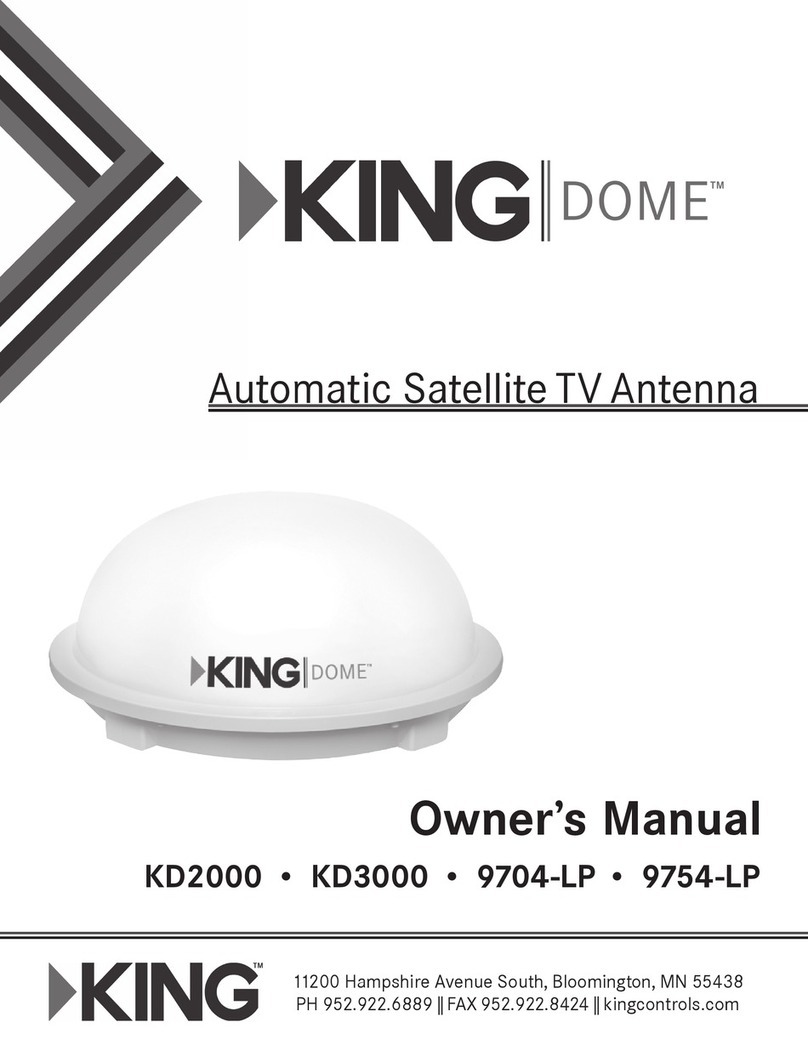
King-Dome
King-Dome KD2000 owner's manual
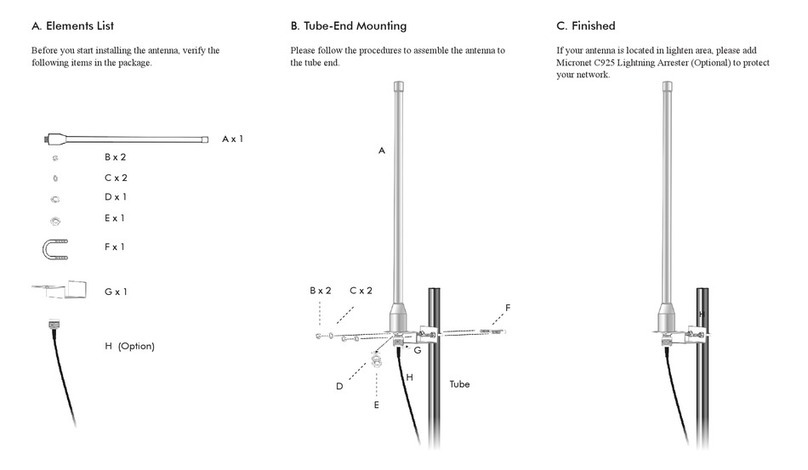
MicroNet
MicroNet SP920M Quick installation guide
